Багато дачників страждають від того, що на ділянці занадто високо стоять ґрунтові води. Надмірна вологість ґрунту підходить не всім рослинам, і багато рослин погано розвиваються або гинуть. Проблему можна вирішити, зробивши високі грядки. При такій організації посадок є можливість контролювати ступінь вологості. А приємним бонусом до такого рішення буде більш ранній термін дозрівання і значно більший урожай.
Зміст статті
Переваги та недоліки
Крім вирішення проблем з переполивом, високі грядки на городі дозволяють сіяти або висаджувати рослини на 2-3 тижні раніше: підняті над землею вони активніше прогріваються за рахунок того, що сонце прогріває стінки. Цьому сприяють і процеси розкладання, що відбуваються в рослинних відходах, які складають значну частину засипки. Саме тому такі грядки називають теплими грядками. Якщо на таку грядку поставити дуги і накрити спанбоном або іншим подібним матеріалом, то урожай можна зібрати ще раніше.
Більш проблематичним є пристрій в регіонах з жарким кліматом. Завдання в цьому випадку полягає не в тому, щоб краще прогріти землю, а в тому, щоб уберегти її від перегріву. Але і це можна вирішити: для огородження високих грядок використовувати матеріали з поганою теплопровідністю, наприклад, дерево. Для кращого ефекту можна зробити подвійні стінки, між якими насипати, наприклад, тирсу, прокласти пінопласт, а можна залишити повітряний прошарок - найкращу теплоізоляцію. У спекотному кліматі зовнішню стіну краще пофарбувати білою фарбою або побілкою. Відомо, що світлі поверхні менше нагріваються. В цьому випадку вдасться вберегти кореневу систему від перегріву: на півдні земля іноді дуже сильно нагрівається і чим вище рослина, тим їй буде прохолодніше. А ще можна натягнути над грядками той же покривний матеріал. Він не тільки зберігає тепло, але і захищає від перегріву.
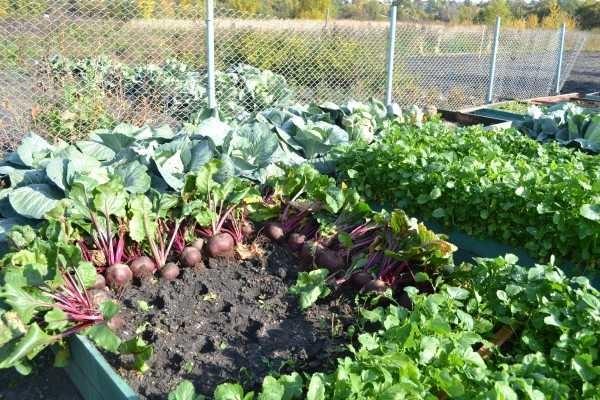
Високі грядки можуть бути хорошим рішенням і на неродючій землі. Зручніше розподілити ґрунт над грядками, ніж розкидати його по всій ділянці. Шар компосту, який знаходиться під шаром ґрунту, допомагає підтримувати родючість.
Вирішується і проблема посушливих регіонів. В цьому випадку огорожу для високої грядки зсередини покривають бітумною мастикою або вистилають плівкою, на дно (на решітку) укладають рулонний гідроізоляційний матеріал (руберойд швидко згниє, тому краще щось із сучасного типу гідроізолу). Повної гідроізоляції не вийде, але утримати вологу всередині в достатній кількості - так.
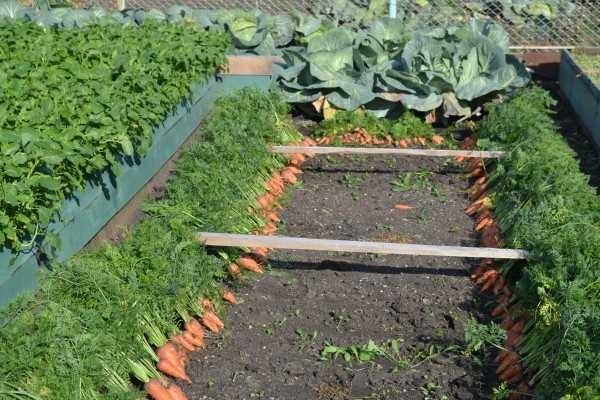
Як бачите, при зваженому підході можна вирішити практично будь-яку проблему. Недоліків у високих ліжок небагато, але не без них:
- У більшості випадків доводиться робити огорожу, а це витрати.
- Трудомісткий процес. Знову ж таки, потрібен час, щоб зробити огорожі, а ще перемістити пристойну кількість землі та рослинних залишків, а це каторжна праця.
- У гниючому листі, гілках, корі чудово почуваються ведмеді та інші подібні тварини. З ними треба боротися.
- Родючість потрібно підтримувати, оновлюючи або повністю замінюючи "начинку".
Це все мінуси. Якщо ви вирішили влаштувати високі грядки, будьте готові до чималого обсягу роботи. Але і врожаю буде в рази більше. Для проби можна зробити одну-дві грядки. А потім вирішити, потрібні вони вам чи ні.
Розмір
Суворих рекомендацій з цього приводу немає і бути не може: дуже різні умови в країні, та й люди теж. Є розміри, які багато хто вважає оптимальними.
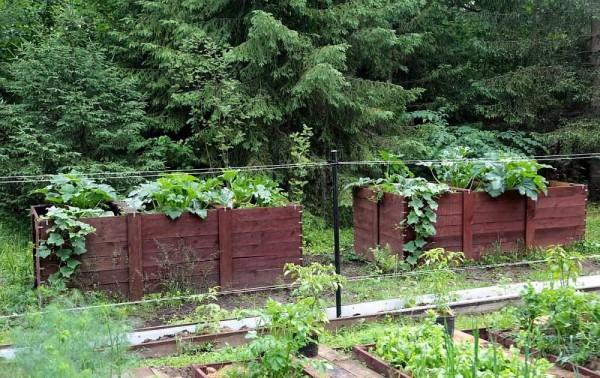
Отже, розміри високих ліжок:
- Висота - від 20 см до 50-60 см. Ось подивіться, яке складне завдання виходить. Чим вище піднята грядка, тим легше її обробляти - менше нахилятися. Але землі і всієї іншої "начинки" знадобиться більше. І ще: якщо грядка невеликої висоти може опинитися під снігом і буде вкрита від сильних морозів, то висока грядка промерзне наскрізь: боки теж відкриті. Для тих грядок, де висівають однорічники, це не грає ніякої ролі, але для багаторічної суниці, скажімо, це проблема. Тому вибирайте висоту ще виходячи з цих міркувань. З досвіду багатьох дачників для полуниці оптимальна висота - 20 см. Тоді можна сподіватися, що вона не вимерзне.
- Ширина - від 60 см до 1,2 м. Ви обираєте таку відстань, щоб вам було зручно обробляти грядку. Відстань 60-70 см вибирають, якщо підхід до грядки тільки з одного боку. Якщо ж до неї можна підійти з обох боків, можна зробити метр і більше. Важливо, щоб середина також оброблялася без особливого напруження.
- Довжина. Тут кожен вибирає, виходячи з конфігурації сайту або свого бажання. Тут взагалі немає ніяких рекомендацій.
Щоб грядка не була занадто високою, частину її можна заглибити: закопати на 20-30 см, а зверху вже ставити стінки. Вийнятий ґрунт піде на засипку (землі часто просто не вистачає), а субстрат нижніх грубих шарів можна зробити товстішим. А щоб мінімізувати витрати на утримання такої грядки, можна зробити крапельний полив.
Що можна використовувати для огородження високих грядок
Можна використовувати все, що може утримувати ґрунт. Найміцніші бордюри зроблені з цегли, каменю та бетону.
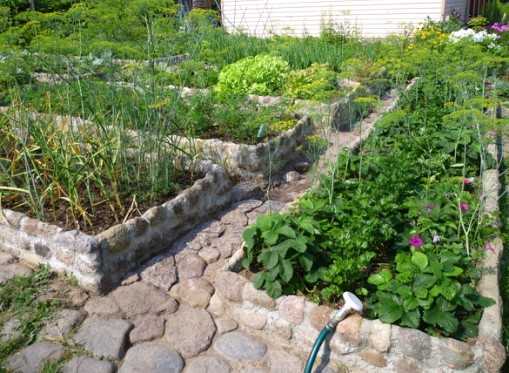
Але цегла коштує дорого, з бетоном довго возитися. Бетонний паркан робиться за всіма правилами: спочатку опалубка, в яку закладають арматуру, потім заливають бетон і чекають, поки він схопиться. Зате термін служби вражає - десятки років.
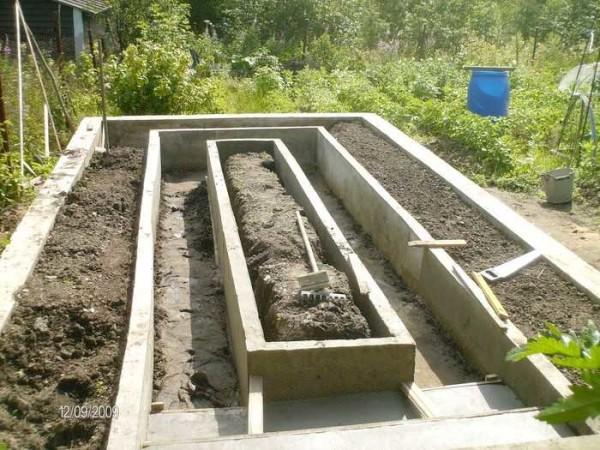
Цегляні та кам'яні паркани також кладуться за всіма правилами: на розчин з перев'язкою. Щоб зменшити витрату цегли, стіни кладуть у півцеглини. А щоб земля не зрушила її, ряди армують сіткою.
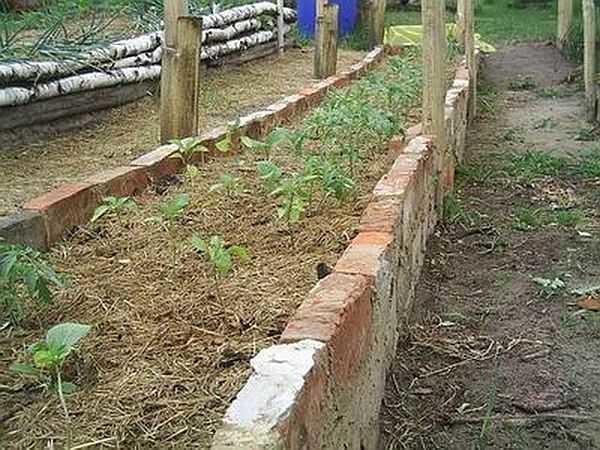
Але навіть у цьому варіанті через метр потрібно буде встановити опорні стовпи. Якщо ваш ґрунт в'язкий, важкий і часто перезволожений, такі стіни може видавити. Тому поставте дерев'яні або металеві опори, які будуть фіксувати довгі стіни або зробіть невеликі грядки, як для декоративного городу.
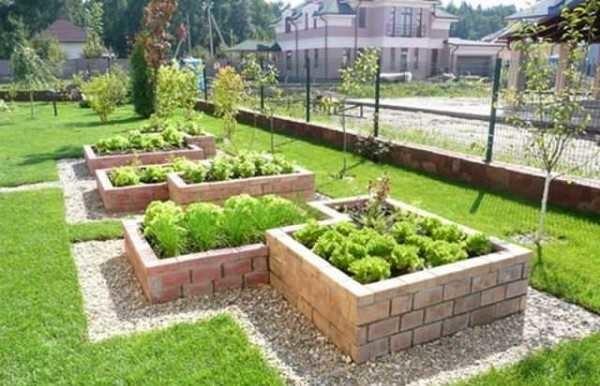
Добре зарекомендували себе паркани з керамзитобетонних блоків. Навіть порожнечі в них можна заповнити ґрунтом і висаджувати рослини з невеликою кореневою системою, наприклад, деякі види зелені та салатів.
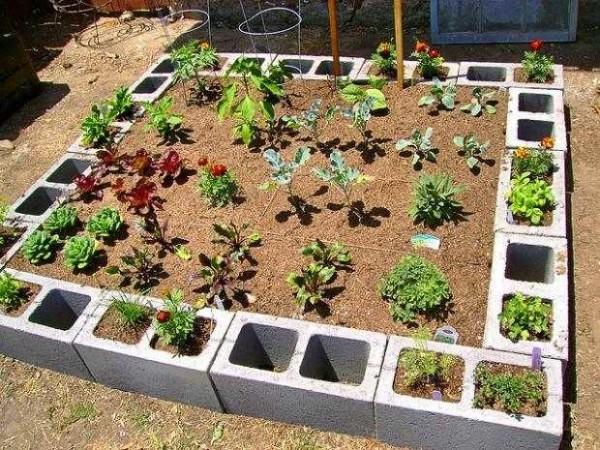
Також роблять огорожі для високих грядок з оцинкованого металу та шиферу. Шифер можна використовувати вживаний, можна купити новий, хвилястий або гладкий - різниці немає. Наріжте листи на смуги необхідної ширини. Боятися, що він шкідливий, не варто. Шифер містить азбест у зв'язаному стані, і він не розчиняється водою. Він шкідливий, коли його розпилюють: пил піднімається і через дихальні шляхи потрапляє в організм. Щоб зменшити шкоду, працюйте в респіраторі, а також змочуйте місця розпилу.
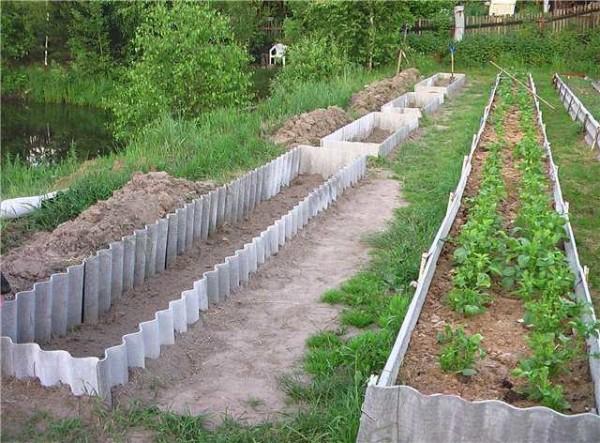
Робимо огорожі для грядок із пластику. Змінили сайдинг? Використовуйте його. Є старі пластикові панелі - вони в ходу. Але пластик вимагає жорсткої основи. Її робить металева сітка з товстого дроту.
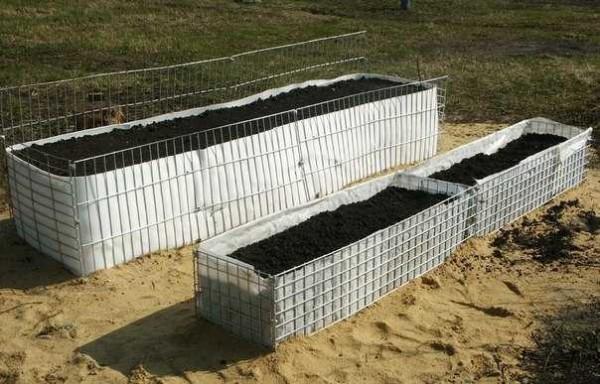
Сітки можуть стати основою для гальки або гранул. Тільки в цьому випадку потрібен подвійний каркас, всередину якого засипають каміння або якийсь інший матеріал. Така техніка називається "габіон" і з неї роблять не тільки огорожі для грядок і клумб, а й паркани. Але щоб вода не просочувалася крізь стінки габіонних грядок, внутрішню частину короба вистилають щільною плівкою.
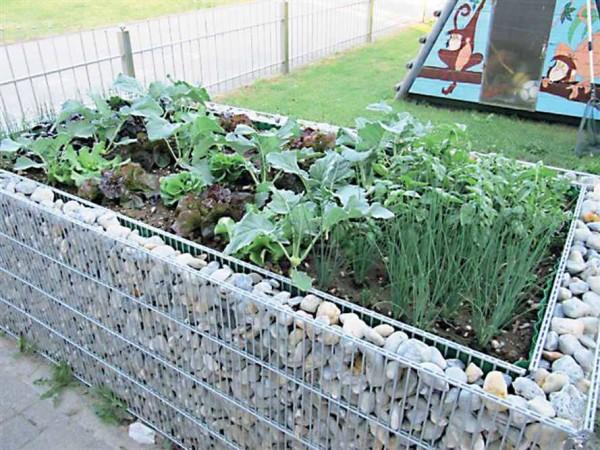
Найпопулярніший паркан - з дерева. Можна використовувати дошки, балки, колоди. Дерево добре всім, окрім того, що воно гниє.
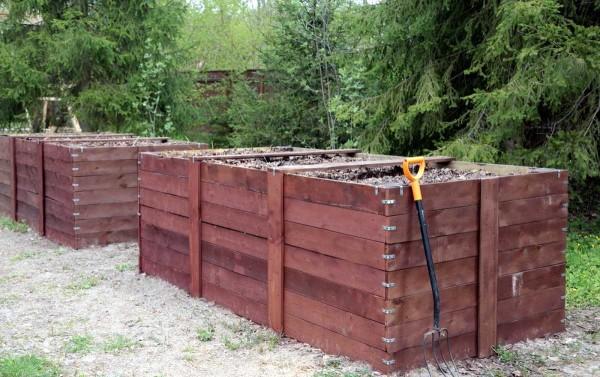
А оскільки у високих грядках є всі умови для активізації цього процесу, то руйнування відбувається досить швидко. Дещо сповільнити процес можна, пофарбувавши дошки або просочивши їх біозахисним складом. Але гарантії від руйнування все одно немає.
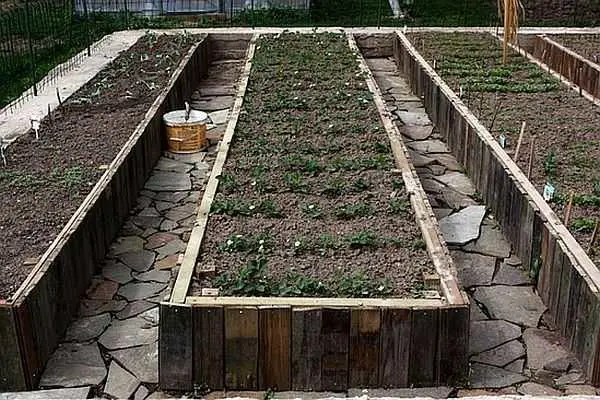
Але матеріал можна використовувати дешевий, а іноді, так навіть викидний: залишки після будівництва, горбиль, старі колоди, піддони тощо. При бажанні можна зробити паркан навіть з гілок. Тільки кору бажано зняти: під нею багато личинок і деревних черв'яків. Хоча... вони перероблять і деревні залишки, які ви покладете на дно засипки. Але ви не хочете, щоб їх було занадто багато, тому, мабуть, краще все ж таки видалити кору.
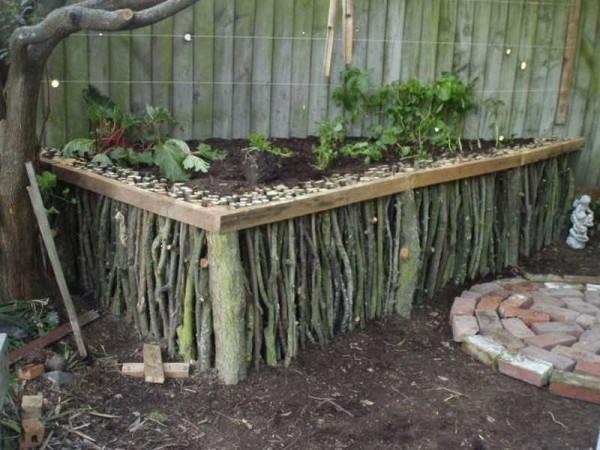
З тих же гілок, тільки свіжозрізаних, можна зробити плетений паркан. І його також потрібно буде вистелити плівкою зсередини: щоб вода і ґрунт не потрапляли всередину.
Про те, як робити плетені вироби, читайте тут.
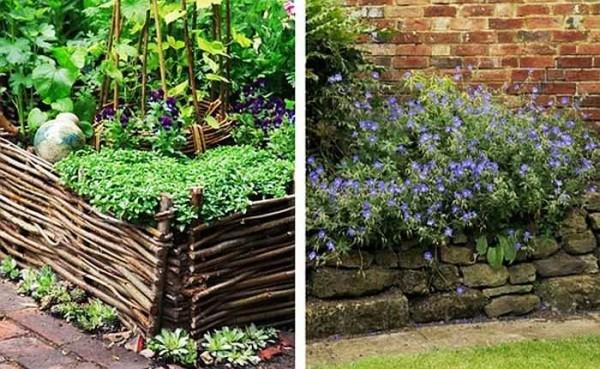
Можна використовувати навіть солому. Її зв'язують у невеликі пучки, які з'єднують між собою дротом. Дешевше просто не може бути, а воду і температуру тримає добре. Єдиний мінус цього варіанту - такий паркан прослужить максимум два сезони, а швидше за все - один. Зате його потім можна використовувати як один з шарів.
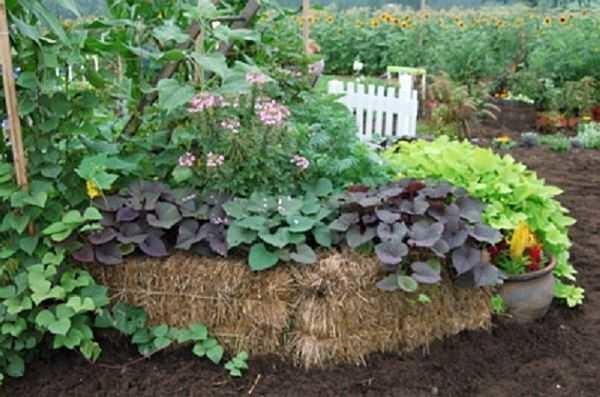
Об'ємні ліжка
Є високі грядки без огорожі: так звані насипні грядки. На них насипають ґрунт у вигляді пагорбів.
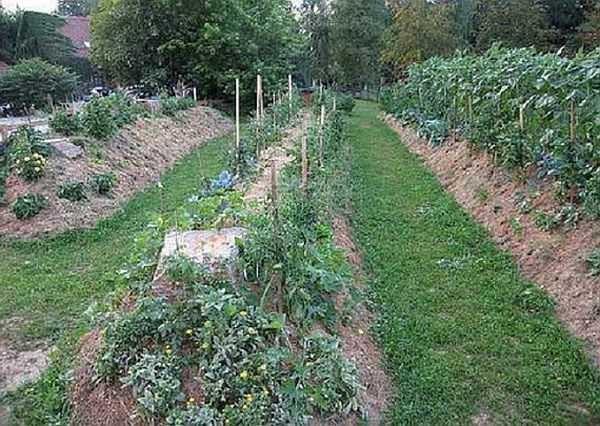
Для поліпшення дренажу всередину грядки кладуть гілки. Щоб зменшити висоту грядки (наприклад, для томатів), її трохи поглиблюють, нахиляючи ґрунт набік. Після укладання гілок її засипають зверху, часто виникає потреба в додатковому привізному ґрунті. Якщо немає можливості глибоко вибрати міжряддя - вибирають міжряддя.
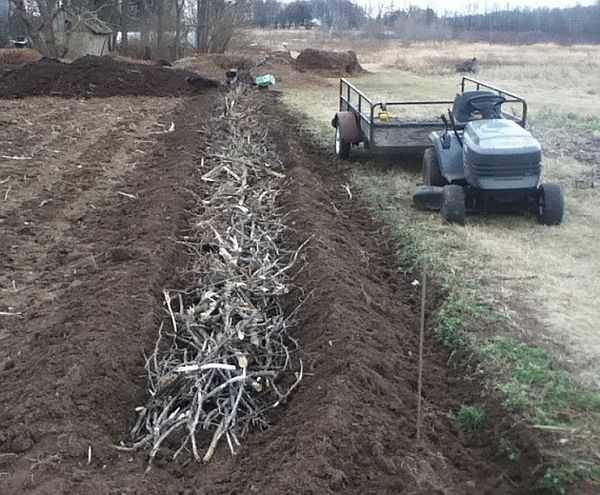
Недолік такого городу: при поливі та під час дощів змивається верхній шар ґрунту. Саме тому почали робити короба - щоб уникнути вимивання ґрунту.
Шари високих грядок
Виготовлення каркасу - це лише невелика частина роботи. Потрібно ще заповнити отриману коробку. Відразу варто сказати, що товщина шарів залежить від висоти обраної вами грядки, тому якщо і наводяться якісь значення, то лише приблизні. Крім розміру грядки на товщину шару, наприклад, родючого, впливає вибір рослин: комусь буде достатньо 5 см, а комусь потрібно набагато більше.
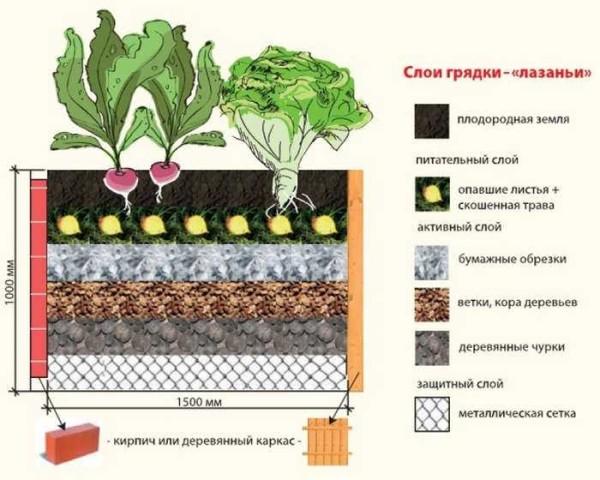
Отже, що висипати на високу грядку - шарами знизу вгору:
- На дно укладається металева сітка з дрібним вічком або шар геотекстилю. Можна покласти картон. Сітка і геотекстиль є захистом від гризунів і кротів. Приблизно таку ж роль відіграє картон, але він менш ефективний.
- Великі деревні рештки: товсті гілки, сучки, навіть шматки та колоди. Цей шар служить, по-перше, для дренажу, а по-друге, в ньому накопичується волога. Чим посушливіший клімат у вашому регіоні, тим більше має бути деревини. І наступних дерев'яних шарів теж.
- Подрібнені дрібні гілки, кора. Підійдуть і інші грубі рослинні рештки: стебла кукурудзи, солома. Їхнє завдання також подвійне. Вони зберігають воду, а при розкладанні виділяють тепло і поживні речовини. Але при використанні кукурудзяних стебел і соломи враховуйте, що грядка незабаром просяде: ці залишки швидко перегнивають, зате врожайність буде високою, а зверху можна насипати родючу землю.
- Папір, тонкий картон. Зазвичай його вистилають тонким шаром. Частіше використовують пакувальний картон, бо глянцевий папір не підходить, а також газети: свинцева основа фарби - це не те, що потрібно для підживлення рослин. Якщо є стара непотрібна мішковина (натуральна), можна постелити її.
- Шар рослинних решток: листя, трава, напівперепріла тирса. Будьте обережні з тирсою: вона сильно підкислює ґрунт. Тому підсипайте їх під рослини, які люблять кислий ґрунт, або нейтралізуйте кислотність, присипавши їх хорошим шаром золи.
- Родючий ґрунт.
В останні два шари можна додати добру порцію зрілого компосту, а також присипати ним глибші шари. Це прискорить "готовність" високої грядки до посадки.
Про те, як зробити ставок на дачі своїми руками читайте тут, а в цій статті написано, як перетворити його на фонтан.
Коли краще робити і що садити
Засипати високу грядку краще з осені. У цей період і "матеріалу" буде достатньо, і за зиму процеси всередині наберуть обертів. В такому випадку навесні можна висаджувати рослини і сподіватися на високий урожай. Можна зробити це і навесні, але навряд чи будуть якісь суттєві відмінності у врожайності: процеси тільки починаються і не можуть мати помітного впливу на родючість засипки. Хоча різницю в кількості води для поливу ви точно відчуєте: її потрібно набагато менше.
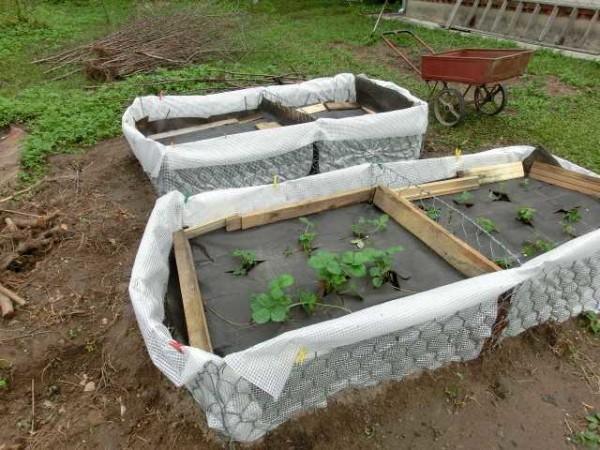
Сівозміна рослин
У рік високої грядки можна висаджувати рослини, що вимагають високої родючості: огірки, кабачки, цукіні, гарбуз, будь-які види капусти, баклажани, помідори, солодкий перець. На наступний рік можна висаджувати зелень - пряно-ароматичну і листову. На другий рік добре себе почувають коренеплоди.
Після другого збору врожаю необхідно відновити родючість. Якщо вміст грядки просів, восени досипають хорошу землю, змішану зі зрілим компостом. Якщо досипати нікуди, знімають частину верхнього шару (на компостну купу або в інший ящик як частину засипки) і замінюють його свіжим ґрунтом з добривами.
Висока грядка для полуниці
Він відрізняється лише тим, що зверху готового "пирога" розстеляють покривний матеріал. У ньому роблять отвори, в які висаджують рослини. Такий варіант призводить до того, що волога випаровується в мінімальних кількостях, а також в міжряддях не ростуть бур'яни. Другий варіант - мульчування землі також добре працює, але випаровування відбувається більш інтенсивно.
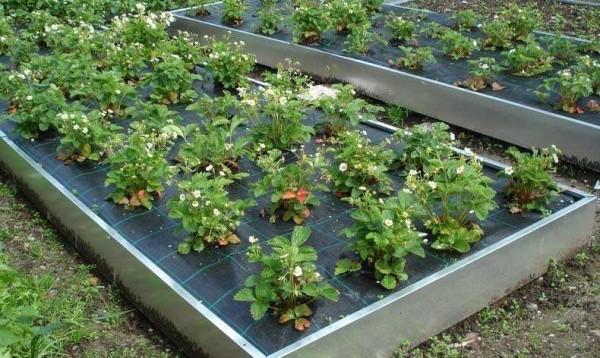
Особливістю полуниці є те, що її коріння розташоване переважно на поверхні. Тому родючий шар може бути невеликим. Але ця ж особливість призводить до того, що в разі сильних морозів він може загинути. Хоча всередині високої грядки і відбувається процес розкладання, який нагріває ґрунт, якщо грядка без снігу і не вкрита на зиму, коренева система може вимерзнути.
Висока грядка для огірків і помідорів
За своїм пристроєм він нічим не відрізняється. За винятком того, що вам знадобляться стовпчики і перекладини або натягнутий дріт по краях, щоб можна було підв'язати кущі помідорів або гілки огірків.
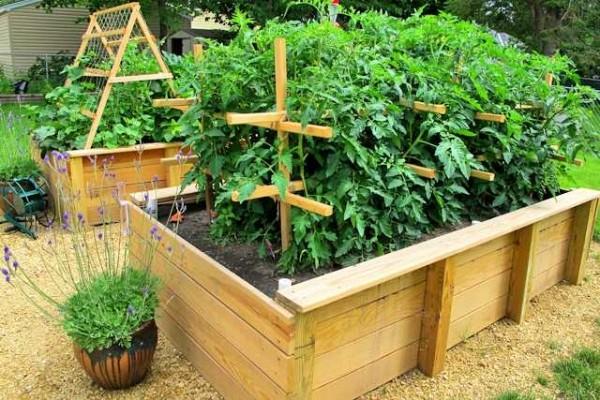
Про організацію автополиву городу або ділянки можна прочитати тут.
Високі ліжка своїми руками
Найчастіше питання виникають не при укладанні шарів на високих грядках, а при виготовленні короба. Оскільки городом часто-густо займаються жінки, то аж до виготовлення огорож для грядок, вони можуть не розуміти багатьох моментів. Для роз'яснення найскладніших наводимо фотозвіти виготовлення короба з дощок і шиферу - найпоширеніших огорож.
З дощок
Кілька варіантів того, як можна зробити високі ліжка з дощок, були на фото вище. Основний підступ зазвичай полягає у з'єднанні в кутах. Найпростіше зробити їх внахлест: просто прикласти одну до іншої під 90° і забити цвяхи. Але є естети, які хочуть зробити все правильно. І правильний спосіб - розпиляти дві дошки під кутом 45° і так з'єднати їх. Саме такий варіант і буде продемонстрований на фото.

Щоб огорожу було зручно фіксувати на землі, з кроком 1,2-1,5 м прибийте вертикальні бруски або шматки дошки, довжина яких приблизно на 20 см перевищує обрану висоту грядки.

Нижній кінець бруска або дошки повинен бути загостреним - так буде легше забити паркан в землю. Потім беремо стамеску або циркулярну пилку і обрізаємо краї під кутом 45°. Склавши дві дошки разом, ми отримаємо ідеальний кут 90°.
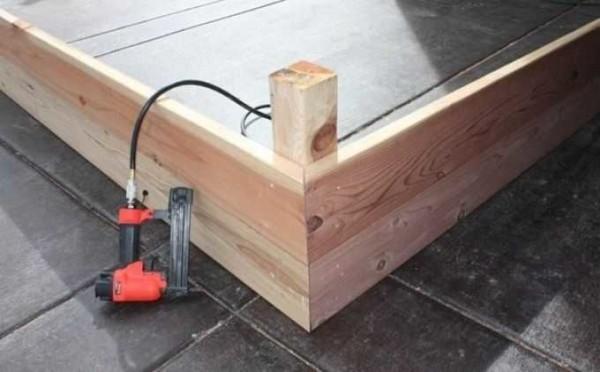
Для міцного з'єднання з внутрішньої сторони кута встановлюємо брус, до якого прибиваємо дошки.
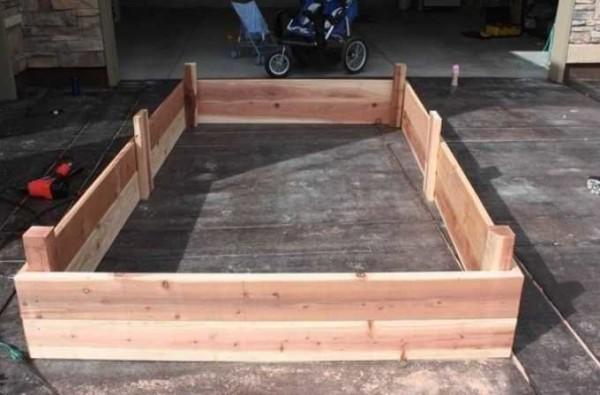
Огорожу для високих грядок з дерева робити недовго, а ще простіше - з'єднати дошки встик, а для міцності прибити металеві куточки (на фото нижче).
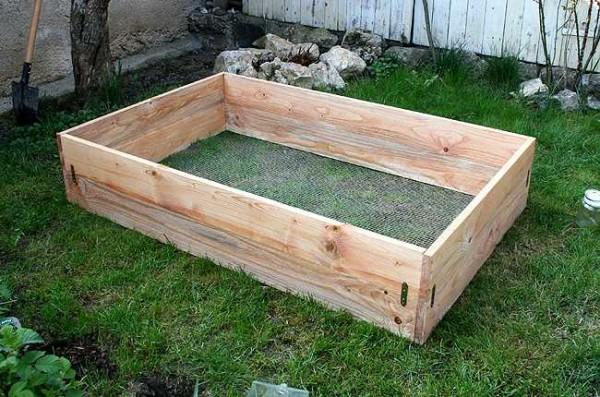
З колод
Не складніше виготовити подібний ящик з обтесаних колод. Наприклад, такий варіант: дві довгі сторони зроблені з колод, а короткі - зі шматків дощок.
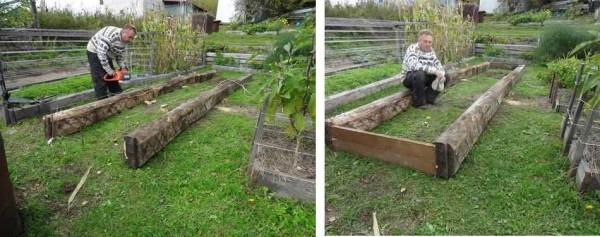
Побілити готовий паркан: і захист від шкідників, і більш привабливий вигляд.
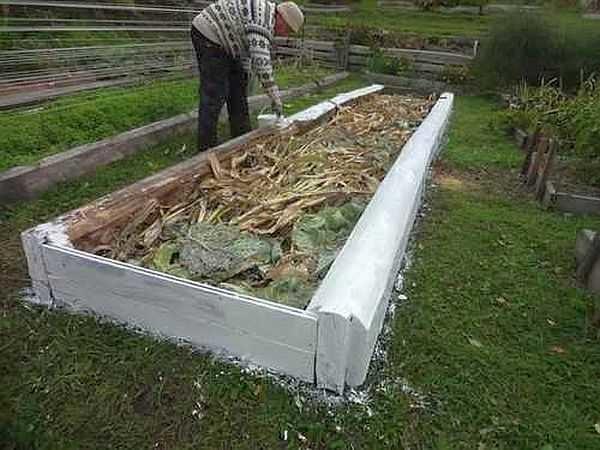
Сланці
При виготовленні грядок з плоского або хвилястого сланцю також виникають питання про те, як його закріпити. Найпростіший спосіб - вкопати. Але це не економно: доведеться робити смуги ширшими мінімум на 10 см, і все одно немає гарантії, що навесні шифер не "попливе". У розкисленому ґрунті його просто видавить маса. Виправити це можна, але це зайвий час і зусилля.
Тому найчастіше з одного або обох боків листа забивають куточки або труби, які затискають шифер і не дають йому сильно відхилятися. На фото куточки забиті тільки з зовнішньої сторони: зсередини на них буде тиснути маса шарів високих грядок, так що паркан не провалиться всередину.
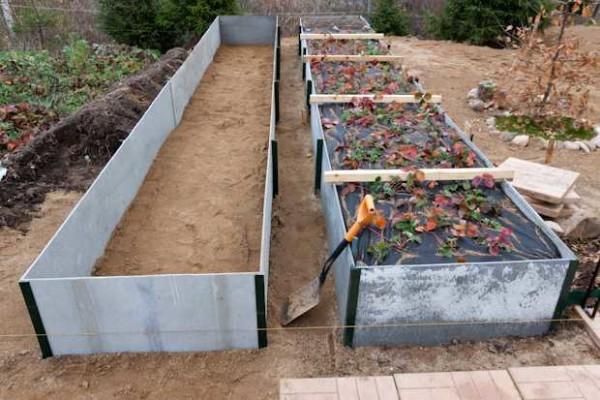
Місця з'єднання двох листів застраховані спеціальною привареною пластиною. Для надійності їх можна прикрутити до дерев'яного бруска, прикріпленого з цього боку.

Інший варіант - зробити каркас. До подібних стовпів з привареними пластинами прикріпити брус або кутник - кому що дешевше. А до цієї рами прикріпити порізаний на смужки шифер (добре тримається на цвяхах, але простіше на саморізах).
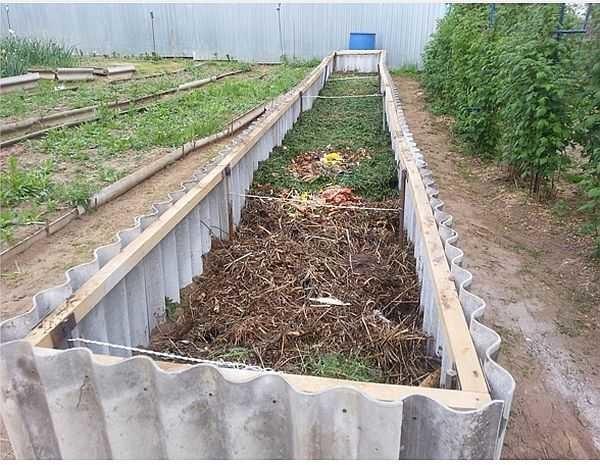
За таким же принципом - з напрямними - роблять грядки з пластикових панелей та інших подібних матеріалів. Як ви розумієте, особливо віртуозної майстерності тут не потрібно. Головне - добре тримати.



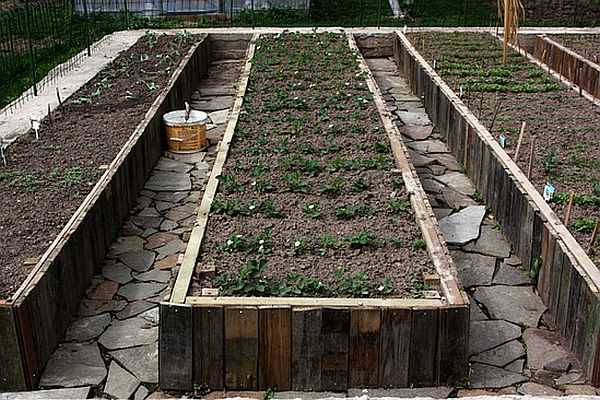
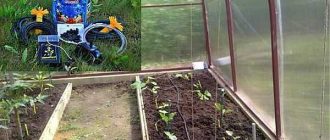
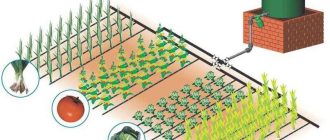
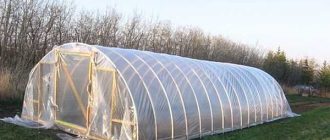
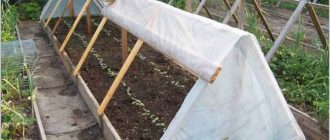
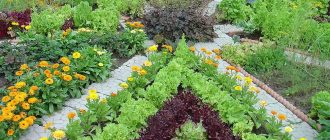
Мені дуже подобається ідея високих ліжок! Я сам збудував собі таке минулого літа, і воно змінило все докорінно. Додаткове місце для зберігання внизу дуже зручне, і це робить мою кімнату набагато затишніше. Безумовно, наступного разу хочу спробувати нові матеріали!
High beds can be a game changer for space! I built mine with some old pallets and a bit of paint. Not only does it look cool, but I can store stuff underneath, too. Just make sure it’s sturdy so you don’t have a surprise drop in the middle of the night!